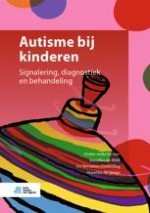Gepubliceerd in:
2021 | OriginalPaper | Hoofdstuk
9. Inleiding deel III – Evidence-based interventie: planning en uitvoering
Samenvatting
Het doel van (vroege) signalering, diagnostiek, behandeling of begeleiding is om het kind met autisme in zijn omgeving zo goed mogelijk te begrijpen en het te helpen om zijn potentieel te realiseren. De behoeften van kinderen met autisme zijn behalve speciaal ook complex; de overgrote meerderheid van individuen met autisme heeft een of meer andere psychische/psychiatrische of somatische problemen (Lai et al. 2019; Rydzewska et al. 2020). Om hier adequaat op in te kunnen spelen is brede, valide, betrouwbare en up-to-date kennis nodig. De aanwezigheid van kennis in de wetenschappelijke literatuur en bij experts betekent echter niet automatisch dat die kennis in de dagelijkse zorgpraktijk voor professionals, ouders en beleidsmakers ook bruikbaar is en toegepast wordt. In deze inleiding wordt ingegaan op de verschillende vormen en bronnen van kennis in het algemeen, en hoe die het beste volgens de principes van evidence-based werken ingezet kunnen worden door gebruikers in de zorg, en in het bijzonder de zorg voor kinderen met autisme. Hierbij worden vanuit een theoretisch kader, praktische handreikingen gedaan die als leidraad kunnen dienen bij het maken van keuzes.
